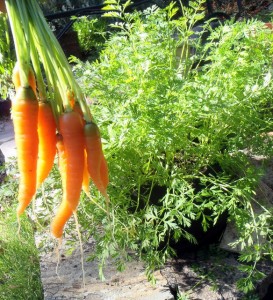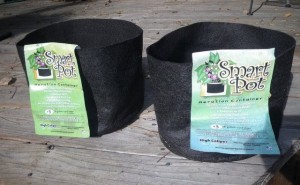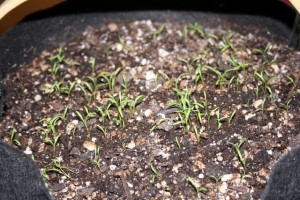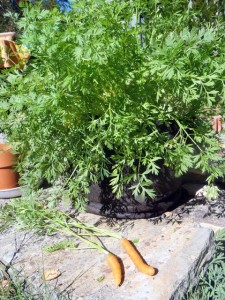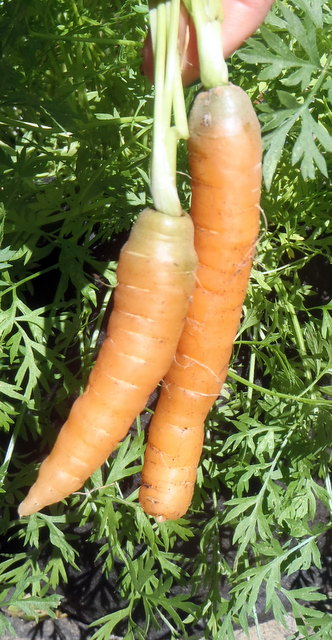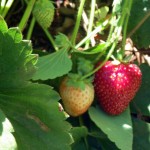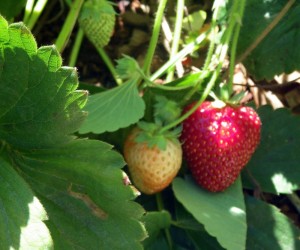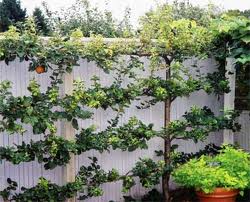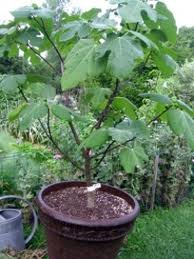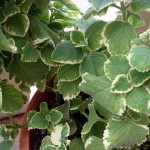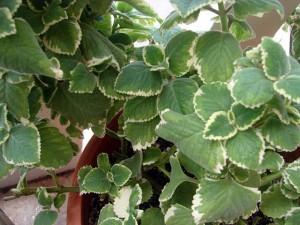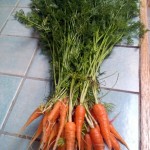
by Avis Licht
[portfolio_slideshow include=”2632,2630,2631,2629,2627,2628″]
I love carrots fresh from the garden, but I also have had some real problems growing them. I get the beds beautifully prepared, raked and ready to go. Sow the seed, water the bed, watch it germinate and bam! the next day the seedlings are all gone. What in the world?!?
Overnight, small and voracious insects come out and devour my delicate seedlings. Earwigs, sow bugs, snails and slugs are all culprits. After several seasons of failure, I decided to grow my carrots in containers, where the little buggers can’t get them. Sure enough I have had incredible success. Not only do the seeds germinate, but growing in potting soil, the carrots come out perfectly formed and absolutely delicious.
The pots I used are called Smart Pots. They are made from fabric that is strong, light weight and come in many sizes. It is perfect for folks who don’t have place to store containers when not in use. They fold up, last for years and create excellent growing conditions for your plants. You can buy them here at discounted prices: Smart Pots.
I tried some different kinds of carrots this year including, Cosmic Purple, which you can see is a lovely purple, Chantenay Red Core and Shin Kiroda, a baby Japanese variety with short 3″ -5″ carrots, just right for a container. I use only organic potting mix which you can get here: Organic Potting Soil.
You can buy organic vegetable seed packets from Seed Savers Exchange here: Organic Vegetable Seeds.
Be sure to give your carrots plenty of sun, at least 6 hours a day.Carrots need constant moisture – don’t let them dry out, but also, don’t drown them.
Children will love to eat these baby carrots, they are sweet and just the right size.

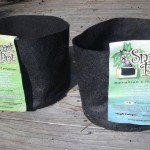
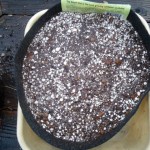
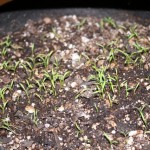
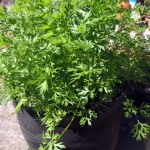
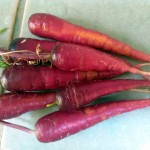
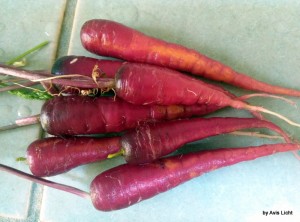
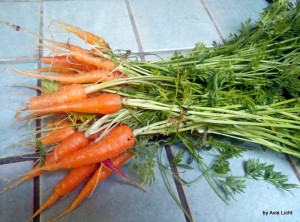
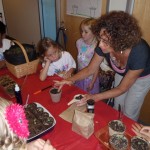

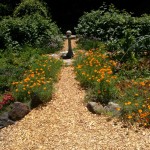
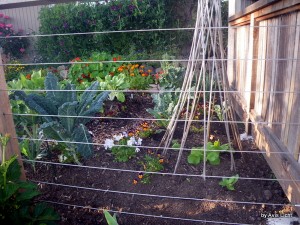
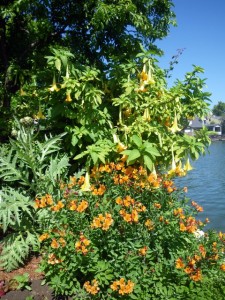
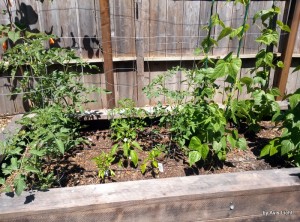
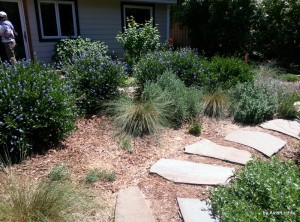
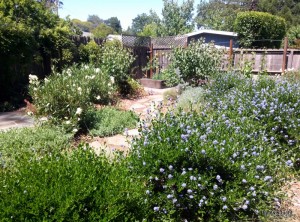
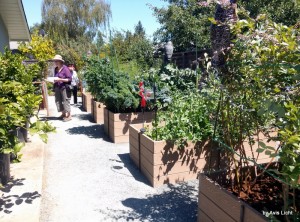
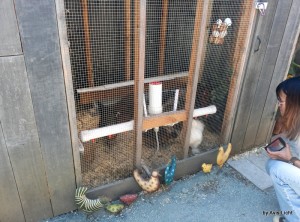
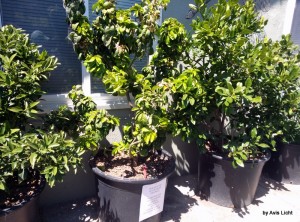
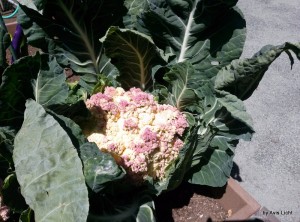
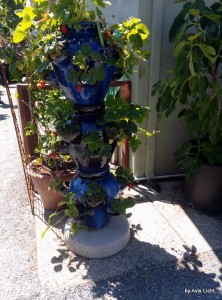
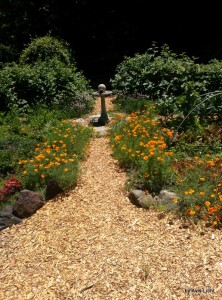
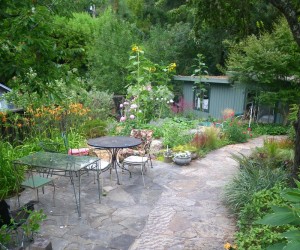
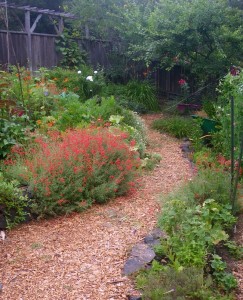
 Follow
Follow

